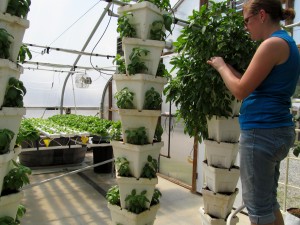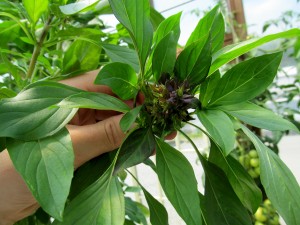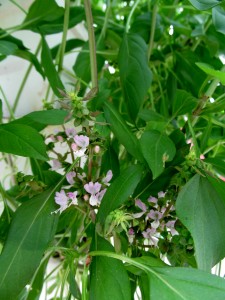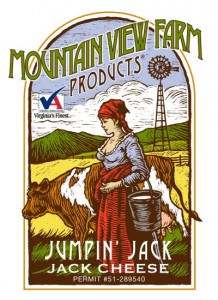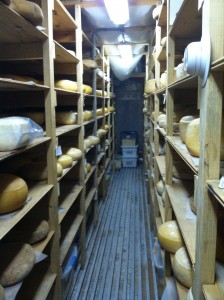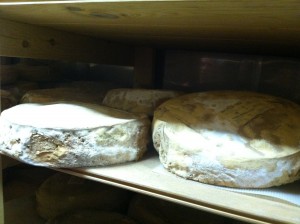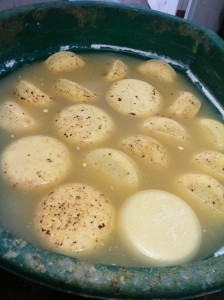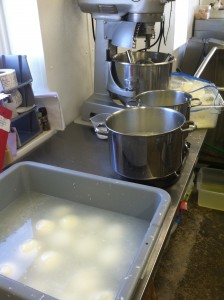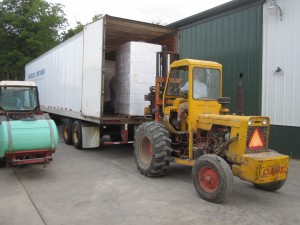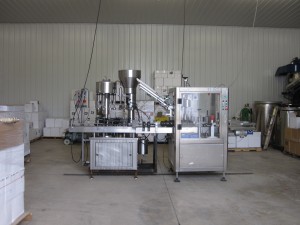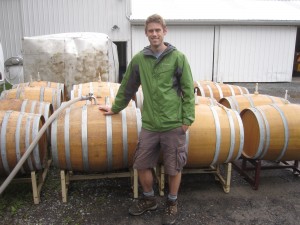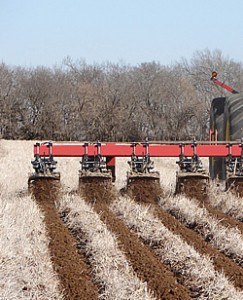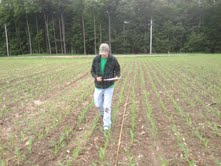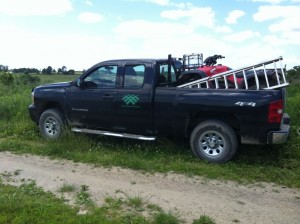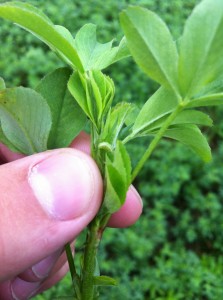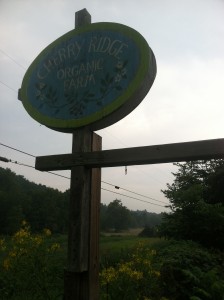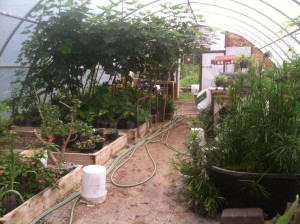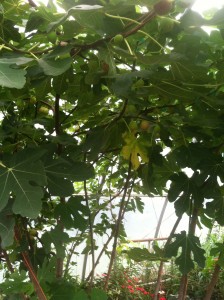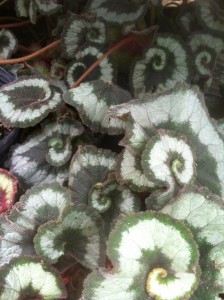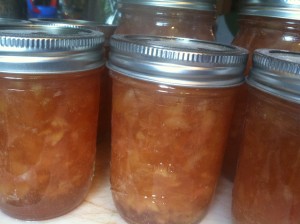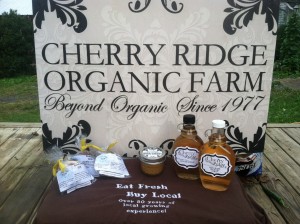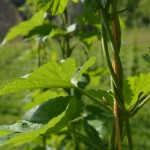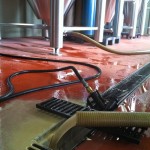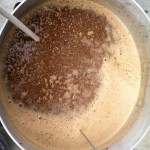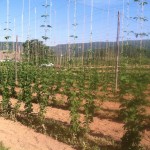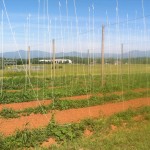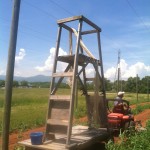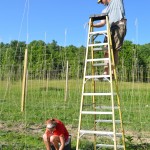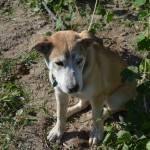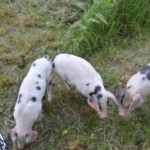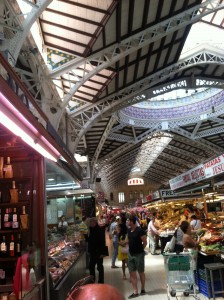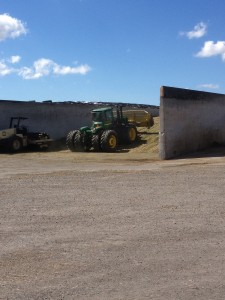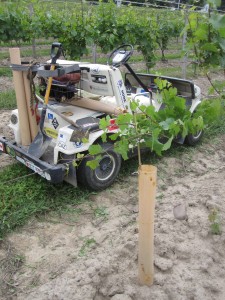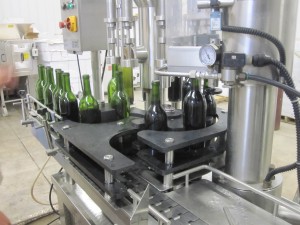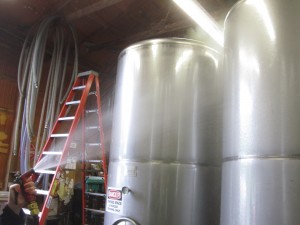Hello from Indiana, Pennsylvania! I am interning at Yarnick’s vegetable farm until August. I’ve been busy planting hydroponic lettuce, harvesting vegetables, processing vegetables, working with herbs, and caring for flowers. Over the course of summer, I will be learning about large scale vegetable production literally from seed to sale.
Basil is an herb used primarily for culinary purposes. The leaves are harvested and used in a variety of dishes including salads and sauces. Thai, purple, lemon and common basil are grown in the greenhouses at Yarnick’s. These annual plants require at least six hours of sun a day, moist soil, and will not tolerate frost conditions. Basil will, however, tolerate high heat conditions that will wilt other plants.
All the basil plants begin as seeds planted in potting soil. Once the true leaves emerge, they are planted in the corners of the herb towers. In other words, four plants will be in each level of the tower. The herbs are set on a watering timer which keeps the soil moist. Fertilizer is mixed with the water so that all nutrient requirements are met. Essentially, basil is kept under optimal growing conditions in the herb house.
Basil needs pinched back after six weeks to promote a bushy growth as opposed to tall or elongated growth. Auxin is a plant hormone located in apical tips responsible for tallness (apical bud growth) while cytokinin is a plant hormone located in the roots responsible for bushy growth (axillary bud growth). When the tips of a plant are removed, auxin is removed. This lowers the concentration of auxin in the plant and therefore raises the cytokinin concentration in the plant. This spurs axillary bud growth or bushiness.
Basil will be harvested after six sets of leaves adorn the stem. The plant may be dug up and sold as fresh basil or it may be cut to half an inch above the soil level. The fresh basil, which will have most of its roots, will be placed in a clear bag filled with water. This allows the basil to survive longer than rootless (cut) basil. The cut basil can grow back, which eliminates the need to replant.
One of the greatest ways to keep basil’s lifespan longer is pinching back the flowers. Normally, plants grow to a mature size and then reproduce when environmental conditions are favorable. When harvesting an herb specifically for the leaves, not the seeds or fruits, reproduction is a negative aspect. Hence, the basil flowers are pinched back and removed to keep the plant from using energy on reproduction. For example, Thai basil will create purple foliage and flowers that will be removed when spotted. This extends the life of the plant and keeps it in a continual harvest state.


